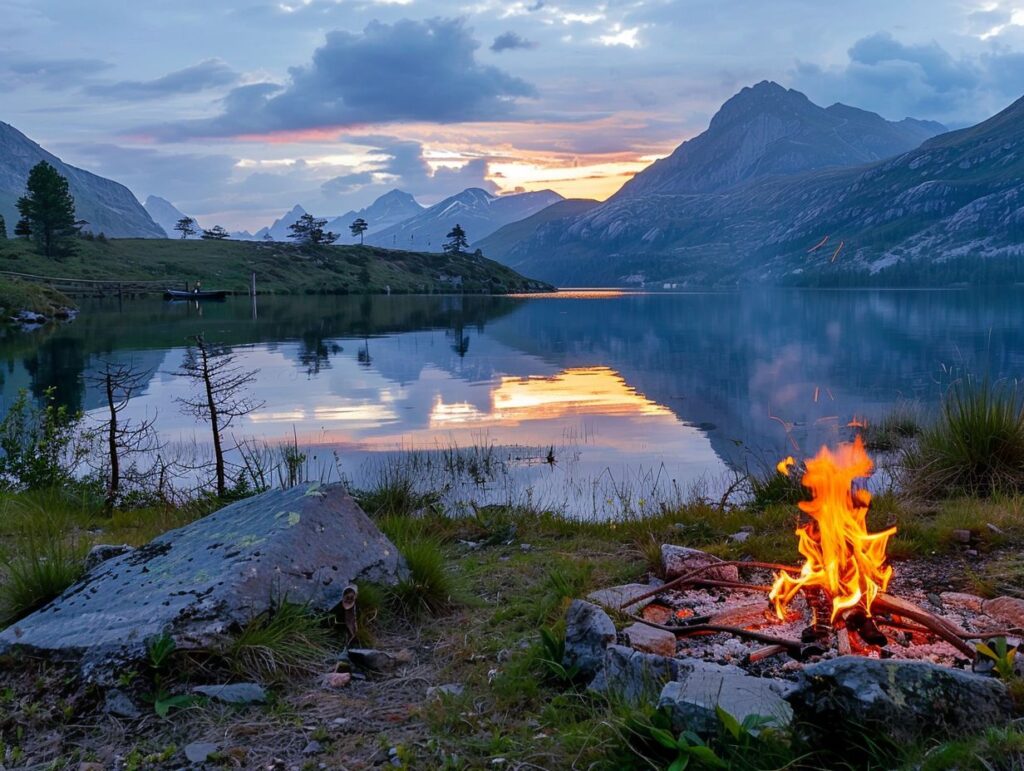Are you looking to enhance your camping experience by setting up camp near water? From lakes and rivers to oceans, there are endless opportunities for adventure and relaxation. Before you pitch your tent by the water’s edge, there are important factors to consider.
In this article, we will explore the benefits of camping near water, rules and regulations to follow, essential items to pack, how to choose the perfect campsite, activities to enjoy, safety precautions to take, and tips for leaving no trace.
So, grab your gear and let’s dive in!
Key Takeaways:
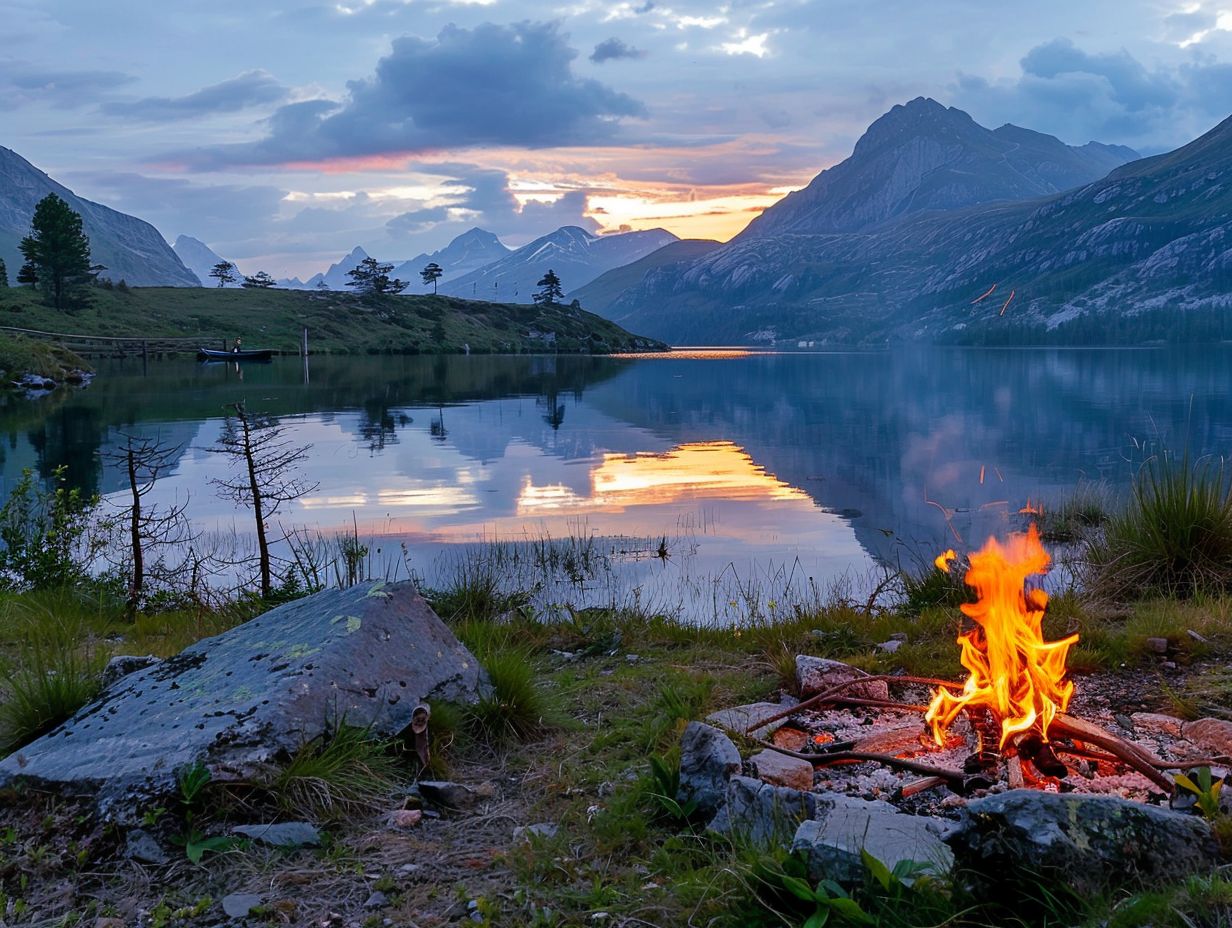
- 1. Camping near water offers a unique experience and access to a variety of recreational activities.
- 2. Before camping near water, be aware of rules and regulations, potential dangers, and essential items to bring.
- 3. When choosing a campsite, consider factors such as proximity to water, safety, and environmental impact.
Why Should You Camp Near Water?
Camping in close proximity to water presents a distinctive experience for individuals with an appreciation for nature, offering an ideal environment to enjoy the allure of the beach, the calming melodies of the ocean, and a diverse range of recreational pursuits.
Whether one is setting up a tent on the sandy coast or exploring the area, a camping trip near water can be simultaneously refreshing and peaceful.
What to Consider Before Camping Near Water?
Before starting a camping trip near a body of water, it is vital to consider several factors, including the availability of water sources, essential camping gear, and potential safety measures. Getting to know the surroundings and checking weather forecasts can also help ensure a safe and enjoyable outdoor adventure.
What Are the Rules and Regulations for Camping Near Water?
When preparing for a camping excursion in proximity to a body of water, it is imperative to acquaint oneself with the relevant rules and regulations, particularly in the context of venturing to a remote locale. The proper disposal of refuse and strict adherence to local ordinances are of paramount importance to the preservation of the natural aesthetics of the area.
An awareness of the permissible camping locations near water sources and compliance with designated camping zones serve to safeguard the fragile ecosystem. Numerous camping facilities feature specialised waste management mechanisms designed to mitigate the adverse impact of human activities on the environment.
Demonstrating consideration for fellow campers and indigenous fauna by maintaining low noise levels and refraining from disturbing the natural habitat is fundamental to fostering a sustainable outdoor sojourn.
What Are the Dangers of Camping Near Water?
Camping in close proximity to water sources presents various hazards that individuals need to be aware of and prepared for. These risks include the potential for fluctuating water levels, unpredictable weather conditions like rain, and the possibility of unexpected encounters with wildlife.
By leveraging resources such as the Tides Near Me application and ensuring the availability of insect repellent, campers can take proactive steps to mitigate some of these potential dangers.
It is imperative for individuals to maintain a vigilant awareness of the likelihood of sudden changes in water levels, which can result in rapid flooding and dangerous swift currents.
Furthermore, in addition to being mindful of weather-related risks like storms and abrupt temperature variations, campers should also equip themselves for potential wildlife interactions, which may involve encounters with snakes, bears, and various insects.
To bolster safety measures, individuals are advised to appropriately attire themselves and select suitable footwear, establish their camping site at a distance from the water’s edge, and employ bear-resistant containers for the safekeeping of food supplies.
Moreover, the possession of essentials such as a first-aid kit, a torch, and a whistle is paramount, as these items can prove invaluable in addressing emergency situations effectively.
What Are the Essential Items to Bring When Camping Near Water?
When camping beside water, it is essential to bring along certain items to ensure a safe and enjoyable experience. These items include a robust tent, a sunshade, a well-stocked first aid kit, and an ample supply of firewood. Additionally, packing sun cream is crucial to protect oneself from the sun’s harmful rays.
A robust tent is paramount as it provides shelter and protection from the elements, especially in locations beside water where weather conditions can change rapidly.
A sunshade is also beneficial, offering a shaded area for relaxation and protection from the intense sunlight during the day. Furthermore, a well-equipped first aid kit is essential for addressing any minor injuries or emergencies that may arise while exploring nature.
Having an adequate supply of firewood is not only essential for creating cosy campfires but also ensures warmth and serves as a means for cooking food. Each of these items plays a significant role in establishing a safe and memorable camping experience beside water.
How to Choose the Perfect Campsite Near Water?
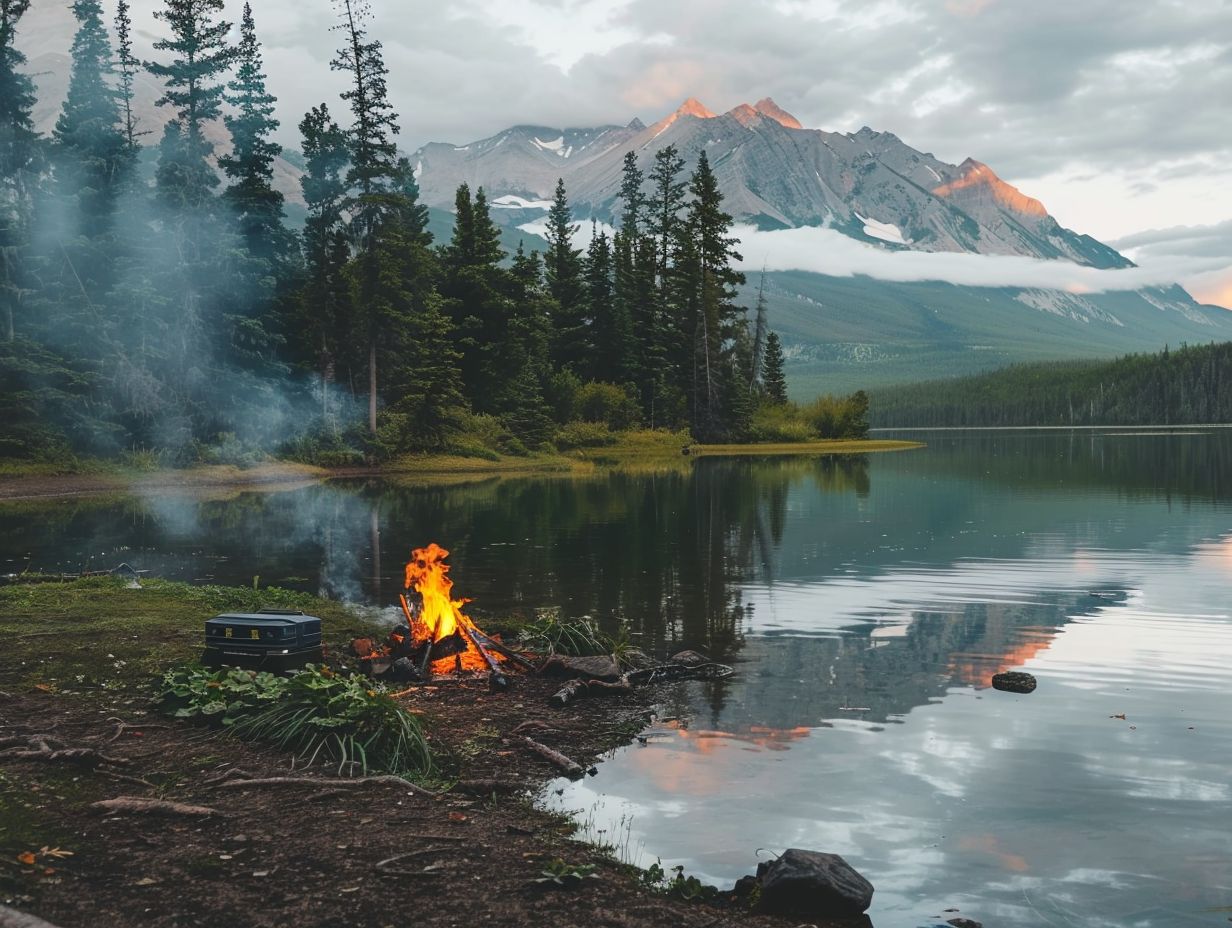
Selecting the ideal campsite in close proximity to water entails taking into account a multitude of factors, including the distance to a freshwater source, the nature of the beachfront, and the existence of sand dunes. A thorough assessment of the surroundings is imperative to guarantee a secure, convenient, and pleasant camping expedition.
What Are the Factors to Consider When Choosing a Campsite Near Water?
When selecting a camping site in close proximity to water, it is imperative to consider key factors such as the availability of water sources, the level of seclusion of the area, and the overall environment. Adhering to safety guidelines is essential in order to ensure a safe and secure camping experience.
The accessibility of water is of utmost importance, as convenient access to a clean water source is vital for activities such as cooking, drinking, and maintaining personal hygiene. Moreover, evaluating the level of seclusion of the site can enhance the camping experience by providing a sense of peace and tranquillity.
Furthermore, assessing the environmental conditions including the terrain, vegetation, and wildlife in the vicinity can assist in identifying a suitable camping site that aligns with one’s preferences.
Safety precautions such as conducting hazard assessments, setting up camp at a distance from water bodies to mitigate flash flood risks, and remaining vigilant of wildlife presence are crucial aspects to consider for ensuring a safe and pleasant outdoor excursion.
How to Set Up Camp Near Water?
Establishing a base camp in the vicinity of water requires pitching a tent on stable sand, setting up a sun shelter, and obtaining firewood for both sustenance and thermal comfort. The careful setup ensures a feeling of comfort and security throughout the camping trip.
Before choosing your camping spot, it is crucial to confirm that the location keeps a safe distance from the water to prevent any unexpected rise in tide levels. Once you find the best location, the tent should be securely anchored using proper techniques, and a thorough check should be carried out to remove any sharp objects that could pierce the tent floor.
The installation of a sun shelter provides protection from harsh weather conditions, while having a sufficient supply of firewood is essential for cooking meals and keeping warm in the evening.
What Are the Activities You Can Do When Camping Near Water?
Being situated in close proximity to water offers a plethora of entertaining activities, ranging from sea swimming and beach exploration to hiking in the nearby areas. Whether one’s preference leans towards water-based excursions or land-based explorations, there are diverse options available to cater to all interests.
What Are the Water Activities You Can Do?
Water activities such as swimming, kayaking, and paddleboarding are commonly enjoyed while camping near the sea or a beachfront. It is imperative to prioritise water safety at all times.
When partaking in swimming, individuals should diligently assess water conditions and remain vigilant for strong currents or riptides. It is strongly recommended to swim only in designated areas and to never swim alone.
For kayaking excursions, participants must wear a properly fitted life jacket and acquaint themselves with the kayak’s operational controls. Enthusiasts of paddleboarding should also secure a leash to maintain proximity to the board and avoid maritime traffic.
Additionally, it is crucial to remember to bring sunscreen, stay adequately hydrated, and inform a trusted individual of your activity plans before embarking on any water-related endeavours.
What Are the Land Activities You Can Do?
Taking part in land activities such as hiking, beach volleyball, and exploring the local flora and fauna can greatly enhance the enjoyment of one’s surroundings during a camping trip situated near water.
Hiking along picturesque trails presents an opportunity to fully immerse oneself in nature, providing awe-inspiring views of the surrounding landscape and potential encounters with wildlife.
Engaging in beach volleyball not only serves as a recreational and physically engaging pastime but also encourages camaraderie and social interaction among fellow campers.
Exploring the indigenous flora and fauna can prove to be a captivating pursuit for nature enthusiasts, offering valuable insights into the diverse plant and animal species that thrive within the ecosystem of the campground.
These activities serve to not only enrich the camping experience but also facilitate the creation of enduring memories amidst the splendour of the great outdoors.
What Are the Safety Precautions to Take When Camping Near Water?
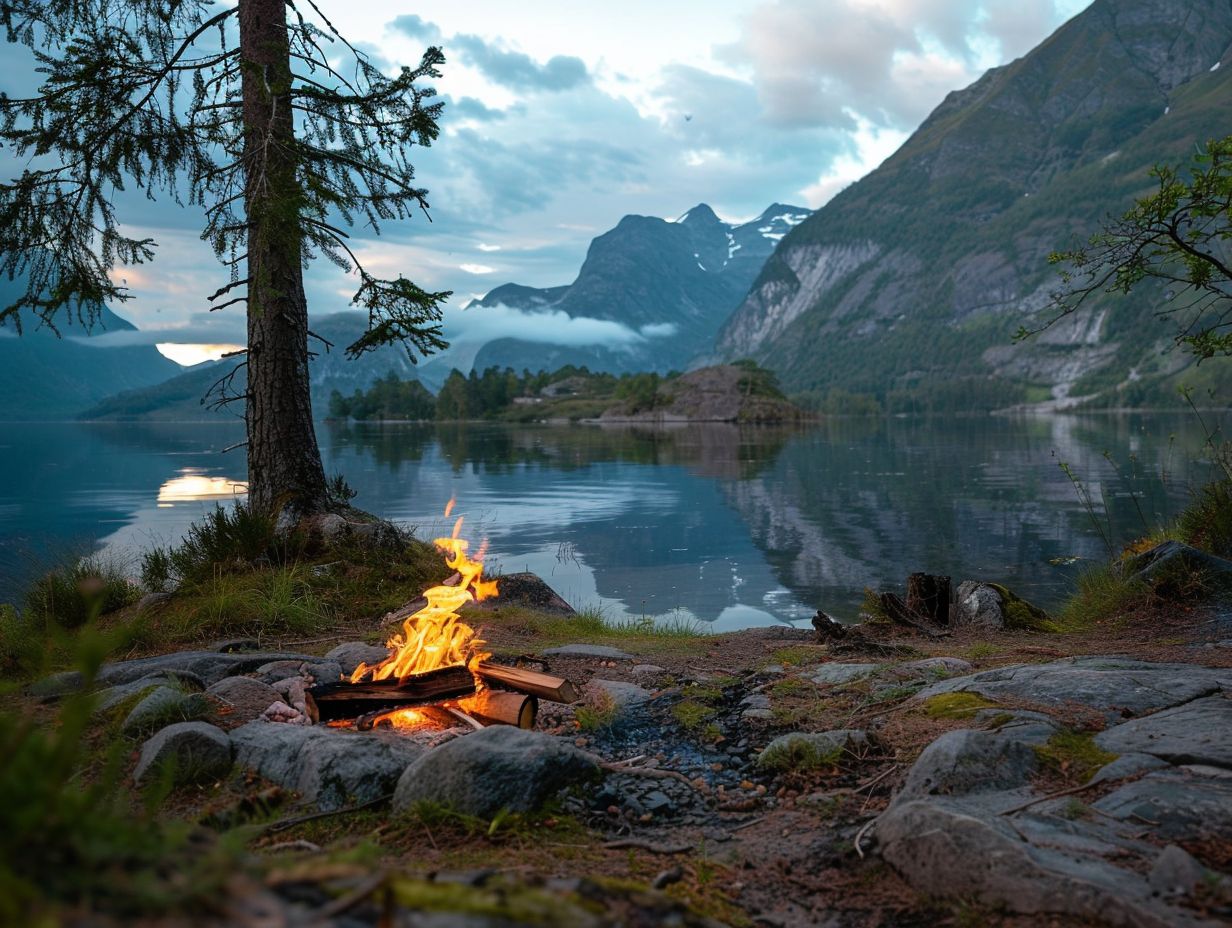
It is imperative to observe safety measures when camping in close proximity to water. This includes ensuring the availability of a comprehensively equipped first aid kit, adhering to water safety protocols, and staying abreast of weather forecasts. Additionally, safeguarding oneself against wildlife encounters and utilising insect repellent are essential preventive measures.
How to Stay Safe While Swimming in Natural Bodies of Water?
Maintaining safety protocols whilst engaging in aquatic activities in natural environments necessitates a comprehensive understanding of one’s surroundings, familiarity with oceanic currents, and vigilant monitoring of weather patterns.
Before entering the water, it is imperative to conduct a thorough self-assessment of one’s swimming capabilities, refraining from overestimating proficiency levels.
Whenever possible, avoid swimming unaccompanied and adhere strictly to demarcated swimming zones. When uncertainties arise, seeking guidance from lifeguards or individuals well-versed in the local area is advisable.
Take note of any warning signage or flags indicating potentially perilous conditions. Additionally, maintaining proper hydration, application of sunscreen, and taking periodic breaks to prevent exhaustion are essential practices.
Show due respect for marine life by avoiding congested areas that may pose hazards. Adhering to these guidelines ensures a safer and more pleasurable swimming experience in natural aquatic settings.
What to Do in Case of an Emergency?
If there is an emergency situation whilst camping in proximity to water, it is imperative to have a well-equipped first aid kit readily available and possess the knowledge on how to effectively respond to encounters with wildlife, particularly in remote locations.
An essential initial measure to undertake during a medical emergency is to calmly and promptly assess the circumstances at hand.
This should commence with a thorough evaluation of the injured individual’s airway, breathing, and circulation. If deemed necessary, the administration of first aid should be executed promptly, followed by an immediate call for assistance.
In the instance of encountering wildlife, it is of utmost importance to maintain composure and refrain from sudden movements that could potentially agitate the animal.
Posture yourself in a manner that conveys a larger presence and retreat gradually. Being equipped with a comprehensive understanding of how to manage such situations can significantly influence the ultimate outcome.
How to Leave No Trace When Camping Near Water?
Ensuring minimal environmental impact when camping near water is crucial for the preservation of natural ecosystems. This involves appropriately disposing of waste and reducing any potential harm to water sources throughout the duration of the camping excursion.
What Are the Principles of Leave No Trace?
The principles of Leave No Trace encompass various guidelines, including proper planning, selecting durable camping surfaces, and correctly disposing of waste to preserve the natural environment while on a camping excursion.
Additionally, an essential principle is to reduce the impact of campfires. This entails utilising existing fire rings when available or using a portable camp stove as an alternative to establishing new fire pits. By adhering to these practices, individuals can aid in the prevention of wildfires and mitigate any visual disruption to the landscape.
Moreover, demonstrating respect for wildlife by maintaining a safe distance and refraining from feeding them is fundamental to their welfare and the preservation of the natural ecosystem. These principles collectively ensure that one’s presence in nature has minimal impact, thus allowing others to appreciate the unspoiled environment.
How to Properly Dispose of Waste When Camping Near Water?
Properly disposing of waste when camping near water requires the meticulous packing out of all rubbish, the careful avoidance of water source contamination, and adherence to local waste disposal regulations.
An effective approach to responsible waste management involves utilising resealable bags to segregate recyclables from regular rubbish, thereby facilitating the proper disposal of each waste category.
The utilisation of biodegradable soaps for personal and dishwashing purposes serves to minimise environmental impact.
Additionally, securely storing food in bear-proof containers is imperative to prevent animals from dispersing rubbish in the campsite vicinity.
By undertaking these fundamental yet critical measures, campers can play a pivotal role in conserving the natural beauty of their surroundings and protecting water sources for the benefit of future generations.
How to Respect and Protect the Natural Environment When Camping Near Water?
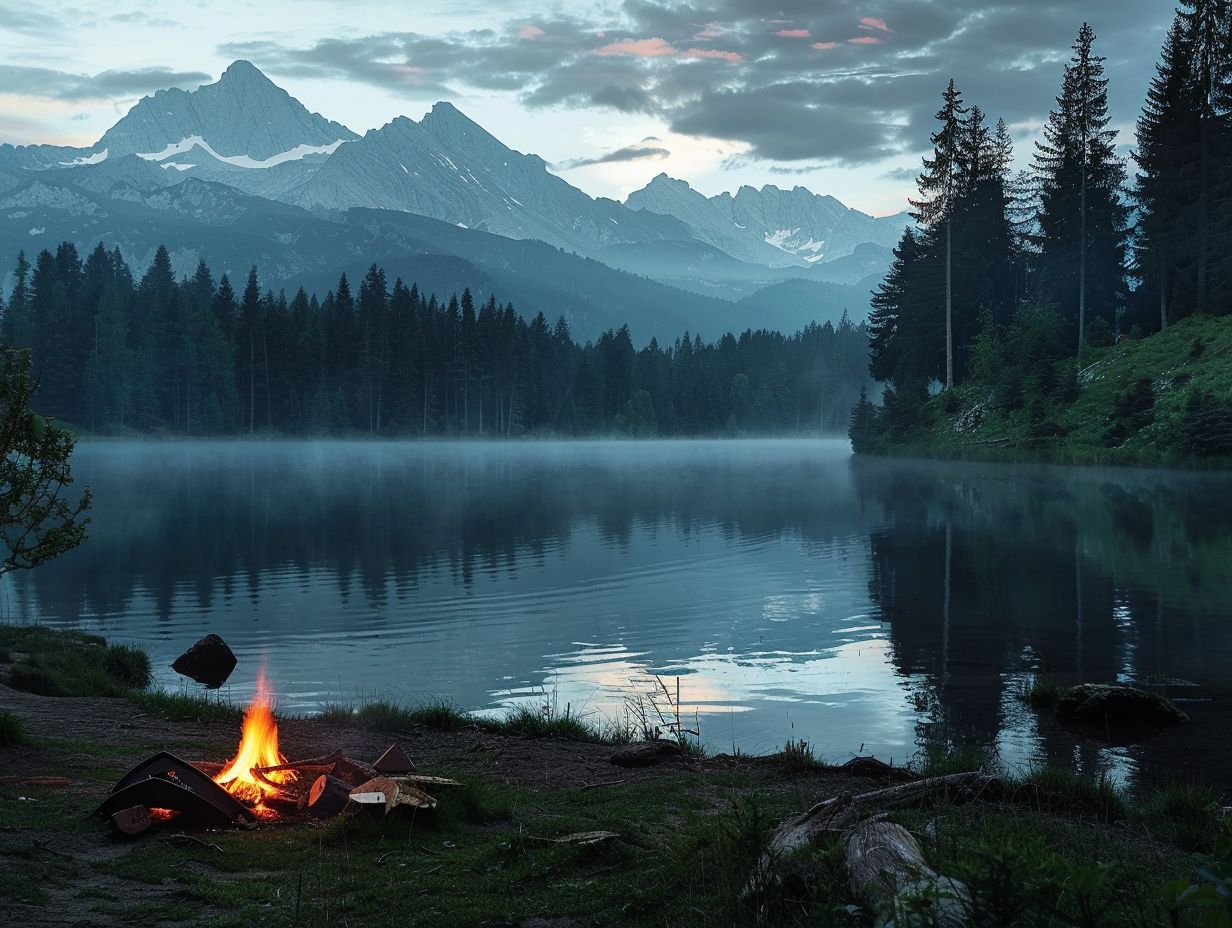
Camping near water necessitates a commitment to respecting and safeguarding the natural environment by minimising the impact on water sources and showing consideration for local wildlife and habitats.
Conscientious selection of products is crucial in reducing pollution levels in the vicinity of water bodies. Opting for biodegradable soaps and detergents is advisable to maintain the cleanliness of water sources.
Ensuring a safe distance from wildlife not only safeguards their well-being but also supports their natural behaviours. Adherence to sustainable camping practices, such as utilising reusable containers and abstaining from single-use plastics, serves to reduce waste.
Embracing these principles allows campers to play a part in the enduring advantages of environmental stewardship, thereby conserving the allure and vitality of our natural ecosystems for forthcoming generations.
Frequently Asked Questions
What are some important safety tips for camping near water?
Always make sure to check the weather forecast and water conditions before setting up camp. Be aware of any potential hazards such as strong currents or steep drop-offs. Also, never swim alone and always wear a life jacket when boating or participating in water activities.
What gear should I bring for camping near water?
Aside from the usual camping equipment, it’s important to pack water shoes or sandals, a waterproof tent, and a tarp to protect against rain or splashing water. A first aid kit and an air horn are also recommended in case of emergency.
How can I minimise my impact on the environment when camping near water?
Make sure to follow Leave No Trace principles, including disposing of waste properly and not polluting the water. Avoid using soap or shampoo in natural bodies of water and be cautious of any potential for contaminating the water with food scraps or other waste.
Are there any rules or regulations I should be aware of when camping near water?
Yes, it’s important to research and adhere to any rules or regulations set by the specific area you are camping in. This may include designated areas for camping, restrictions on fires, and guidelines for fishing or boating.
What are some fun activities to do when camping near water?
There are plenty of activities to enjoy when camping near water, including swimming, kayaking, fishing, and even just relaxing by the shore. You can also take a hike or explore the surrounding area to appreciate the natural beauty of the water.
What should I do if I encounter wildlife while camping near water?
If you encounter wildlife while camping near water, it’s important to give them space and not approach or feed them. Keep all food and scented items properly stored to avoid attracting animals. If you are in a designated camping area, there may be specific guidelines for wildlife encounters that you should follow.

